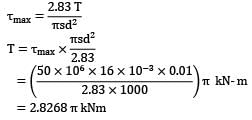Test: Design of Joints Level - 2 - Mechanical Engineering MCQ
20 Questions MCQ Test Design of Machine Elements - Test: Design of Joints Level - 2
A double fillet welded joint with parallel fillet weld of length L and leg B is subjected to a tensile force P. Assuming uniform stress distribution, the shear stress in the weld is given by
A circular solid rod of diameter d welded to a rigid flat plate by a circular fillet weld of throat thickness t is subjected to a twisting moment T. The maximum shear stress induced in the weld is
| 1 Crore+ students have signed up on EduRev. Have you? Download the App |
Pre loading of bolts in structural joints and pressure vessels subjected to fluctuating loads?
In transverse fillet weld, the size of the weld is equal to
The permissible stress in a fillet weld is 100 N/mm2 . The fillet weld has equal leg lengths of 15 mm each. The allowable shearing load on weldment per cm length of the weld is
Tearing efficiency of a double riveted lap joint having a pitch of 60 mm and rivet hole diameter of 18 mm is
Two metal plates of thickness ‘t’ and width ‘w’ are joined by a fillet weld of as shown in given figure.

When subjected to a pulling force ‘F’, the stress induced in the weld will be
In the welded joint shown in the given figure, if the weld at B has thicker fillets than that at A, then the load carrying capacity P, of the joint will

A circular rod of diameter d is welded to a flat plate along its circumference by fillet weld of thickness t. Assuming as the allowable shear stress for the weld material, what is the value of the safe torque that can be transmitted?Options~
(A) ![]()
(B) ![]()
(C) 
(D) ![]()
A single parallel fillet weld of total length L and weld size h subjected to a tensile load P, will have what design stress?
How can shock absorbing capacity of a bolt be increased?
By reducing the shank diameter equal to the root diameter the impact strength of bolts
Shown in the figure is a bracket attached to a channel by means of 5 identical rivets. The maximum load on most heavily stressed rivet is __________ kN
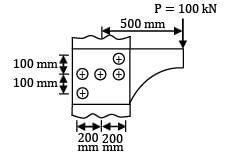
What is the diameter of the hole that must be drilled in a M50 (core diameter mm) bolt such the bolt becomes of uniform strengths is __________ mm?
A shaft of diameter D is welded to a plate as shown in figure. A torque T is applied at the free end. If the maximum shear stress produced is given by . Where h is the leg length of weld, then the value of n is __________

A component is attached to a horizontal column by means of three identical rivets as shown in figure. The maximum permissible shear stress for the rivets is N mm . The magnitude of maximum force is __________ kN.
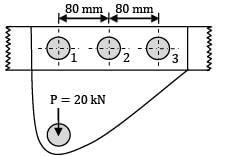
A plate is attached using 4 rivets as shown in the figure
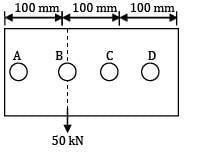
If the maximum allowable shear stress is 80 MPa, then what will be the minimum diameter of rivets required (in mm)?
The circumferential joint of a boiler of diameter 1 m is made of lap joint with rivet diameter of 20 mm. If the allowable shear stress for the material of the rivet is 50 MPa and the boiler has to withstand an internal pressure of 2.5 MPa, then the minimum number of rivets required to prevent the failure of the joint is
A shaft of 100 mm diameter is welded to a flat plate by a fillet weld of weld size 16 mm as shown in figure. If the allowable shear stress for the weld material is 50 MPa, the maximum torque the shaft can withstand to avoid weld failure is

Two plates are joined together by means of single transverse and double parallel fillet welds as shown in the figure given below. If the size of fillet is 5 mm and allowable shear load per mm is 300 N, what is the approximate length of each parallel fillet?

|
49 videos|70 docs|77 tests
|
|
49 videos|70 docs|77 tests
|




 t
t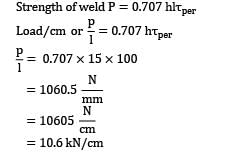
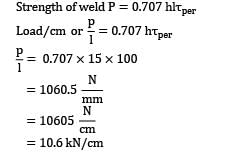

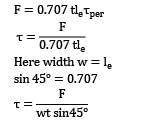
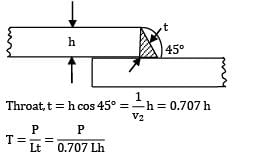
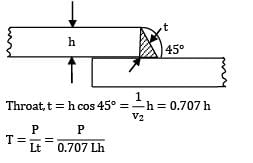

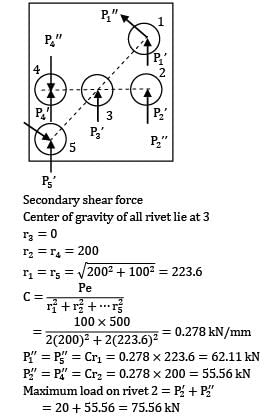
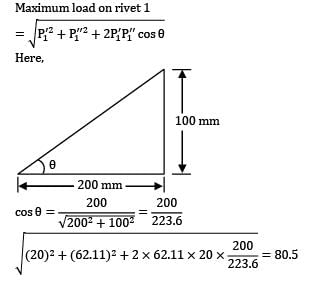



 = 23.74
= 23.74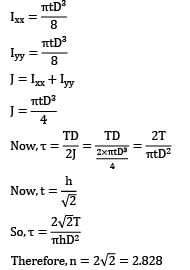
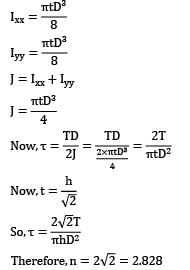

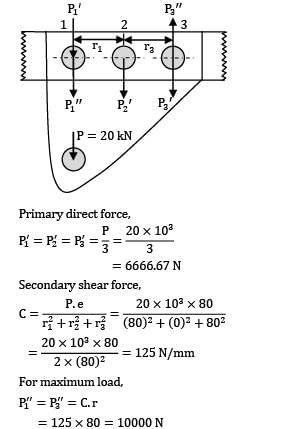
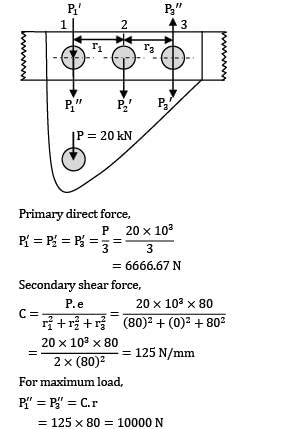
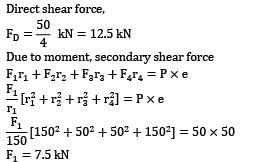
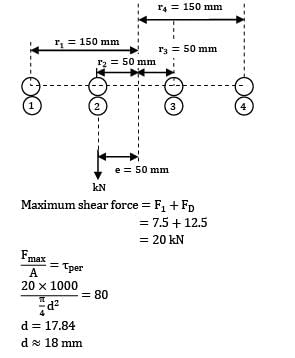

 mm
mm
